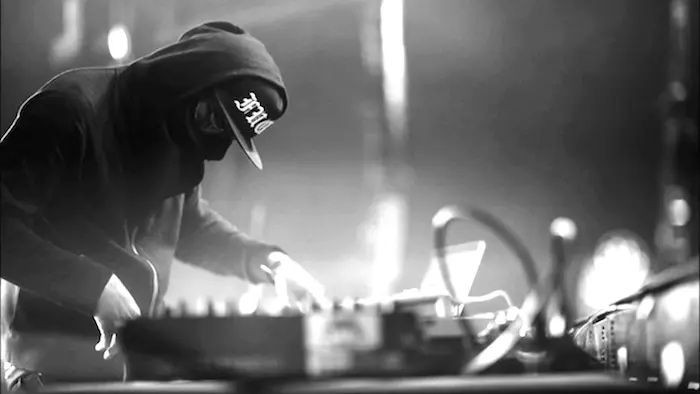Mouse Trap music is a relatively unknown but intriguing subgenre that combines elements of trap, electronic, and experimental music. It started as a niche genre but has been gaining more attention recently. Artists who create this type of music often push the boundaries of sound and rhythm, using unusual samples and innovative beats. The unique nature of Mouse Trap music challenges listeners to think differently about what music can be, making it both innovative and refreshing. In this article, we will explore the origins, key characteristics, and the future of Mouse Trap music, as well as how it continues to shape the modern music landscape.
I. What Is Mouse Trap Music?
Mouse Trap music is a genre that blends traditional trap beats with experimental and electronic sounds. It’s not defined by a strict set of rules, allowing for creativity and freedom in its composition. The genre’s name may invoke images of a literal mouse trap, but the music is more about trapping listeners in a unique sonic experience. This fusion of styles makes it a dynamic and evolving genre.
The Origin of the Genre
The term “Mouse Trap music” first gained traction in underground music circles, particularly in the experimental electronic scene. Musicians who wanted to break away from conventional structures found a home in this genre. While it shares similarities with traditional trap music, Mouse Trap stands out due to its experimental approach. The genre has roots in the fusion of trap and avant-garde music, combining hard-hitting beats with unpredictable rhythms.
II. Characteristics of Mouse Trap Music
Mouse Trap music is known for its quirky, eclectic style. Here are some of its defining features:
Heavy Trap Beats: Like its parent genre, Mouse Trap music relies on heavy 808s and fast-paced hi-hats.
Unconventional Samples: One key element that sets this genre apart is the use of unusual sounds, such as mechanical noises, animal calls, or glitchy digital effects.
Experimental Rhythms: The beat patterns in Mouse Trap music can vary wildly, often throwing listeners off with unexpected time signatures or abrupt tempo changes.
Minimalistic Melodies: While some songs feature complex, layered harmonies, others lean toward minimalism, focusing on the percussive and rhythmic aspects of the track.
III.. The Impact of Mouse Trap Music on Other Genres
Trap Music
Mouse Trap music has had a noticeable impact on the broader trap scene. Many trap artists have begun to incorporate more experimental sounds into their work, taking inspiration from Mouse Trap’s use of unusual samples and rhythms. This blending of genres has helped to diversify trap music, keeping it fresh and relevant.
Electronic Music
Mouse Trap’s influence on electronic music is even more pronounced. Artists within the electronic music sphere are constantly searching for new ways to engage their audience, and the experimental nature of Mouse Trap provides endless possibilities. By merging these two genres, Mouse Trap artists have created a crossover sound that appeals to fans of both styles.
Film and Video Game Soundtracks
The genre’s cinematic quality has also led to its use in various film and video game soundtracks. Directors and developers are drawn to the unique, immersive experience that Mouse Trap music can provide. Its unpredictable nature helps to set the tone in scenes that require tension, excitement, or suspense. As a result, Mouse Trap music is increasingly being used in soundtracks that aim to engage the audience on a deeper level.
IV. Why Mouse Trap Music Stands Out
Innovation Over Tradition
One of the primary reasons for Mouse Trap music’s growing popularity is its emphasis on innovation. Many mainstream genres rely on formulas that have worked for years, but Mouse Trap music flips the script by continually evolving. Artists are encouraged to break free from the norms and explore new sonic territories.
Appeal to Niche Audiences
While Mouse Trap music may not have mainstream appeal, it resonates with niche audiences who are looking for something different. These listeners crave music that challenges their expectations, and Mouse Trap delivers exactly that. Its combination of familiar trap elements with unfamiliar sounds makes it a compelling genre for those seeking an alternative musical experience.
V. The Future of Mouse Trap Music
Increasing Popularity
As more artists experiment with the genre, Mouse Trap music is poised to grow even further. Social media platforms and streaming services have allowed niche genres like this one to reach wider audiences, and as people discover the genre, its fan base will likely expand. In the future, we could see Mouse Trap artists collaborating with mainstream musicians, further blending the genre with other popular styles.
Potential for Commercial Success
While Mouse Trap music is still largely underground, it has the potential to break into the commercial realm. Its unique sound could be used in advertising, particularly for brands that want to stand out from their competitors. In addition, more musicians from other genres might start experimenting with Mouse Trap elements in their work, increasing the genre’s visibility.
See Also: 10 Must-Listen Tracks of OPM Rap
VI. Conclusion
Mouse Trap music is a genre that defies easy classification, combining elements of trap, electronic, and experimental music to create something entirely new. Its reliance on heavy beats, unconventional samples, and experimental rhythms make it a unique sonic experience. Although still niche, Mouse Trap music is beginning to influence other genres, particularly trap and electronic music. As it gains popularity, it’s clear that this genre will continue to evolve, pushing the boundaries of what music can be. With its innovative approach and growing fan base, the future of Mouse Trap music looks bright. This genre will likely continue to shape and inspire the modern music landscape for years to come.

